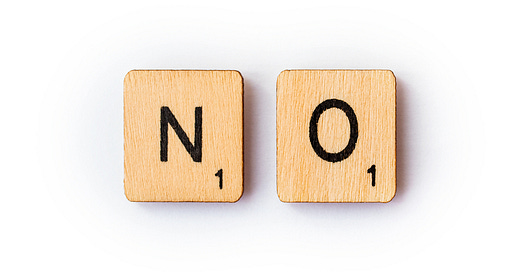10 Tips for Saying an Effective "No"
I can help you do it with confidence and flair, and WITHOUT looking like an asshole.
If you’re overworked, overdrawn, and overwhelmed because you have a hard time saying that pesky two-letter word, please enjoy these tips from my book Fuck No!: How to Stop Saying Yes When You Can’t, You Shouldn’t, or You Just Don’t Want To.
(Boundaries, baby! They’re kinda my specialty.)
Keep reading with a 7-day free trial
Subscribe to No F*cks Given® with Sarah Knight to keep reading this post and get 7 days of free access to the full post archives.




